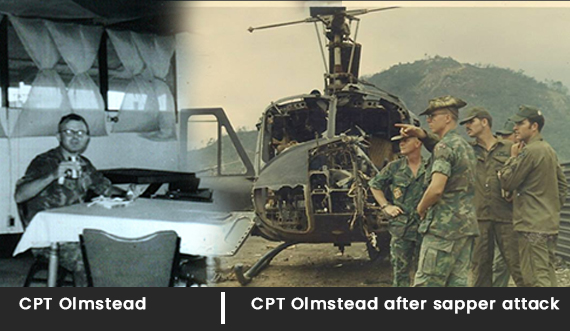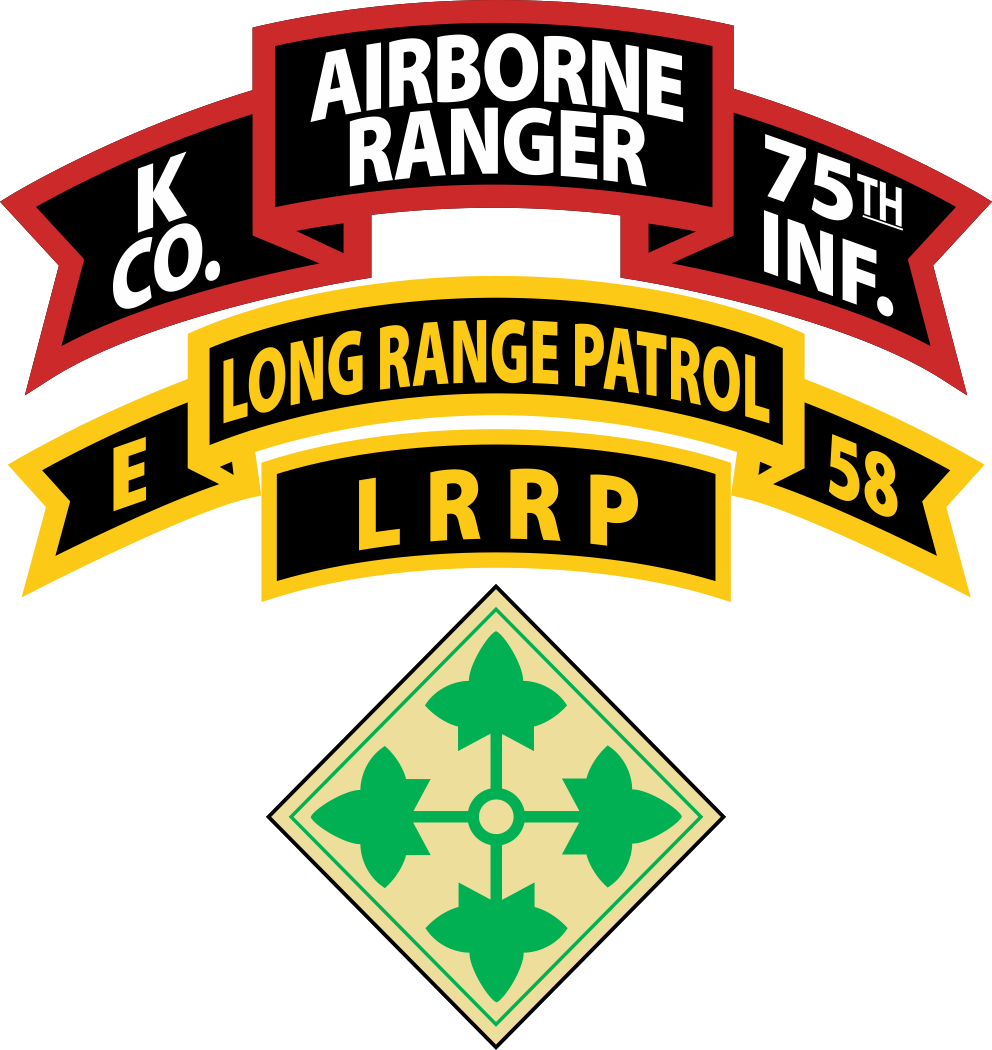LTC
Kim Olmstead
Welcome Letter to 4th Division LRRPs and K/75 Rangers
From LTC Kim Olmstead (US Army, Retired)
Company Commander, K/75 Rangers, October 1969-May 1970
Fellow K/75 Rangers and LRRPs:
This letter is to welcome you to the K75ranger.com website, where we are working to preserve our unit’s history. As we contributed to the lineage of the U. S. Army Rangers with our combat missions in Vietnam, I believe it is important to acknowledge our legacy and the importance of what we passed on.
Serving in a divisional Ranger company is characterized by the pursuit of excellence. This standard was clearly established by British officer, Major Robert Rogers, during the French and Indian War of 1755.
The British needed a special operations light infantry force. Major Rogers personally selected and trained a contingent of 600 soldiers, who became known as Rogers’ Rangers. Their mission was to find, fix, and destroy the wildly elusive North American Indians and French Irregulars. This was no small accomplishment. Major Rogers was a very detailed administrator and established “Robert Rogers’ 28 Rules of Ranging.” These rules were written in 1757 and reflected the realities of that time. They have been studied and used throughout our Ranger history. Modified and updated rules provide the model for today’s 75th Ranger Regiment.
LTC. Kim Olmstead
Of note, Colonel William O. Darby used a copy of Rogers’ Rules during WWII. Colonel Darby formed the 1st Ranger Battalion, which became known as Darby’s Rangers. On D-Day (6 June 1944) the United States Ranger Assault Group assaulted and captured Pointe du Hoc after scaling the 100 foot cliffs. Merrill’s Marauders (named after Frank Merrill, officially named the 5307th Composite Unit (Provisional), was a United States Army long range penetration special operations jungle warfare unit which fought in the South-East Asian theatre, or China-Burma-India Theater (CBI). The unit became famous for its deep-penetration missions behind Japanese lines, often engaging Japanese forces superior in number. Each of our major wars reflected the need for elite fighting men who ultimately helped change the course of the war. Vietnam was no exception.

During the latter part of 1966, we began using “screen lines” which established small forces of ½ squad each, spread over large areas, in order to track enemy movement. We used this tactic effectively in the Ia Drang Valley, where several major battles were fought. The Battle of Ia Drang in November 1965 was re-enacted in the movie, “We Were Soldiers.” Assigning small teams proved to be an effective recon tactic and occurred at about the same time as General William “Ray” Peers was setting up the first LRRP units in the 4th Division. Two battalions of the 25th, known as the “Cacti” Brigade, were subsequently transferred to the 4th Division.
As Rogers’ Rangers fought an unconventional war against an unconventional enemy and Merrill’s Marauders took the war into the enemy’s “safe zones” by using guerilla tactics, the LRRPs and Rangers became the elite fighting men of the Vietnam War. Our performance in combat set the standard and is the foundation for the new generation of Rangers and Seals fighting today.
My second tour in Vietnam was the assignment of a lifetime, back into the Pleiku area as Company Commander of K/75 Rangers. I assumed command in October 1969. During this time, G-2 was prioritizing our Ranger missions to “count people and pull snatches.” Their mission was to improve the situational awareness about the battlefield for commanders at division level or higher, so they can adapt their units combat power for the current operations. Counting heads was of no use to anyone and I was able to convince them that we should be shooting them instead of counting them. We received a great deal of support and, in fact, in one staff meeting I attended they said we were out-killing an entire division and asked me what else I needed. My response was simply, “Give me more Rangers.”
K/75 Rangers won the hearts of all warriors and their commanding generals in the Central Highlands of Vietnam in 1969/70. Containment of VC/NVA was traded for offensive operations against the Ho Chi Minh Trail. Ordered by GEN Abrams (CG, MACV), planned by K/75 Rangers, approved by MG Walker (CG, 4th Inf Div), and executed with a badass attitude by the Ranger teams.
The best special operations light infantry recon since the colonial days of Robert’s Rangers, the Rangers were in every major American War through Vietnam and currently in the Middle East. We are currently in a war against ISIS. If given their head, today’s Rangers could set back ISIS as a threat to our Republic.
Patton said “Containment” would never work. In the face of the Truman Containment Doctrine that took us to Korea, Vietnam, and the Middle East, he was right.
Join your old Ranger Company, K/75 Rangers, and become actively involved. You are needed to keep on fighting. There is work to be done. Be proud of the history of the Rangers, the contribution to that history that we made as LRRPs and Rangers, and the brotherhood that we all share. Our unit is now taking steps to preserve our history while many of us are still alive to contribute.
Each Ranger that serves adds to the heralded legacy begun in 1775. Whether you’re a Ranger who scaled the cliffs at Pointe du Hoc, rescued the POW’s at Cabanatuan, fought at Cisterna, or survived enemy fire in the Big Bad Central Highlands of Vietnam – you share a bond with all Rangers.
The memories and recollections you will find in these pages are not meant to glorify any particular Ranger. That glory has been burned in our hearts many times over by their deeds and need no further words. Some of our members lost their lives in those jungles, most lost their youth. Many of our brothers returned home to raise wonderful families and find great success in their lives, others left Vietnam but Vietnam never left them. They all shared a remarkable spirit in that they were all willing to risk everything with the expectation of nothing. The reward for their service was the bond that has not diminished throughout the years. We have faith, in years to come, our members will be recalled for the role they served in enhancing the high warrior standard begun by earlier units. We, further, intend to challenge Rangers serving today and those not yet born by setting high the standard by which they will ultimately be measured.
Sua Sponte
Kim Olmstead
1/1/1943 – 1/18/2019
Note from K-75th Rangers Memorial Team :
Upon request, LTC Kim Olmstead submitted a “Welcoming Letter” for the website. He was kind enough to submit his letter just prior to his death. We thank him now and we thank him for his leadership then.
